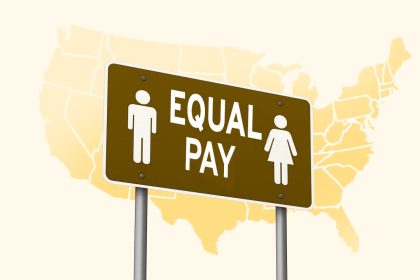What if we told you that, according to J.D. Power, only 1 out of every 4 personal loan borrowers identify themselves as “financially healthy”?
The consumer insight data firm also rates personal loan lenders — we’ll get to their rankings — but its latest survey of nearly 6,000 borrowers may be burying that surprising lead:
“We can trend the last three years, we’ve seen the overall financial health of the respondent pool decline so much, significantly,” says J.D. Power head of lending intelligence, Bruce Gehrke.
Gehrke added later: “So, when we see satisfaction flat compared with other lending satisfactions, which are moving up significantly and steadily over the last few years, we feel that maybe this just isn’t hitting the mark as well as it has in the past.”
Why personal loan borrowers are feeling worse off
Maybe it’s all very simple. Combine America’s record levels of consumer debt with economic uncertainty — inflation, trade wars, a finicky stock market and fears of recession — and ta-da: You have more and more personal loan holders feeling out of shape financially.
But there’s one snag in that story. As Gehrke alluded to, far more than 25 percent of borrowers taking out other products say their finances are just fine.
Gehrke states that three in four borrowers tend to be financially healthy in J.D. Power’s other studies. “So, when we don’t see that significant increase like we are seeing in other lending products, I think that there’s a little bit of a miss there when it comes to the emotional side of the connection,” Gehrke says.
So, what gives?
Personal loans’ ‘set it, forget it’ nature
Yes, there’s less emotion in borrowing a personal loan than, say, a student loan for college or a mortgage for your home. The latter products can be viewed as investments in your future. Personal loans may be taken out for nearly any purpose, but typically are a way to deal with debt that already exists in a different way through consolidation.
But the lack of a borrower-lender connection in personal loans might be more than inherent. It’s a side effect of how easy it has become in recent years to apply, gain approval for and receive a personal loan. Fintechs have pushed brick-and-mortar banks and credit unions to offer streamlined applications, online prequalification and direct deposit within hours to a few business days.
And once the loan begins, the relationship sort of ends for many people. The borrower (ideally) signs up for autopay, and the lender collects payments. Why reach out if everything is going according to plan?
“Now, I know there are some specific lenders out there that are very unique in their target customer, and they are playing an active financial health role or attempting to do that,” Gehrke says. “So, it’s not always the case more broadly. But, in a lot of these [cases], it’s kind of set it and forget it.”
Stubbornly high interest rates, stiff eligibility criteria
The more you pay for something — especially if that something, like a personal loan, hasn’t changed in value — the more likely you are to feel squeezed. And personal loan borrowers who have borrowed in the last 12 to 24 months (the respondent pool of J.D. Power’s analysis) have paid far more, in the form of higher interest rates.
| Average interest rate on a two-year personal loan | |
| 2025 (Q1) | 11.66% |
| 2024 | 12.27% |
| 2023 | 11.87% |
| 2022 | 9.87% |
| 2021 | 9.38% |
| 2020 | 9.51% |
| Source: Federal Reserve | |
It’s no wonder, then, that J.D. Power’s highest-rated lenders tend to offer lower average personal loan interest rates. These lenders also typically lend to borrowers with strong credit and income — borrowers who are less likely to struggle with repayment, deem themselves “financially unhealthy” and become dissatisfied with their lender.
As Gehrke says, “You can see that by looking at the rank chart.”
So, which are the best personal loan lenders?
In six years of J.D. Power performing its personal loan study, Gehrke says it’s clear that the vast majority of consumers borrow for one of two ends: to consolidate higher-interest debt or, for those without substantive emergency savings, to deal with an unexpected expense.
Some lenders — such as the highest-ranking American Express or Citibank — specialize in helping customers with debt consolidation. They offer credit cards, and they started offering personal loans to avoid losing those customers to other lenders that offer low-interest debt consolidation loans.
Another group of lenders — think lowest-ranking OneMain Financial, OppLoans and Oportun, to name a few — also operate in the debt consolidation space. But they’re more likely than peers to assist consumers with that unforeseen expense, like a surprise medical bill, even if they don’t have good-to-great credit.
These lenders’ customers might be more likely to become dissatisfied, and consider themselves financially unhealthy, hence the lower ranking.
What’s the methodology of J.D. Power’s study?
- The firm surveys personal loan borrowers who took out their loans in the previous one to two years (85 percent of respondents borrowed within the past 12 months, Gehrke says).
- Credit unions are less likely to be featured — and Navy Federal and USAA didn’t officially rank despite their study-high ratings — because they require membership or serve exclusive audiences.
- The survey also poses questions to bucket respondents into one of four categories: financially healthy, financially stressed, overextended and vulnerable.
Which is the best personal loan lender for your situation?
Gehrke says the top-performing lenders do well because of their service in three areas, among others:
- Factor
-
Gehrke’s context
- Application
-
“This is a highly digital product: You can go into one of these websites or a mobile app, get your information in there, and in a lot of cases, have money in your checking account within a day or two.”
- Data security
-
“It’s the most impactful key performance indicator that we measure in the study. So, if you don’t believe or feel strongly about the security actions that the lender is taking — about how they communicate with you about it, what they tell you, how you can partner with them and make the transaction more secure — that’s more apt to drive a lesser satisfaction.”
- Communication
-
“How the lender explains [origination fees] and when they explain that matters significantly as well. And that’s something that does pop up, because all of a sudden you’re getting a loan, and they take it out of the proceeds… And if that happens and you don’t know that’s going to happen, [it’s] really, really destructive for the overall experience.”
J.D. Power isn’t the one source of truth, of course. Hey, Bankrate awards the top personal loans, too.
But the bottom line is that the best personal loan lender for you might be different from the top choice for your neighbor. It’s also not necessarily the easiest loan to get.
So, how do you know which lender is the right one for you? Well, it takes consideration and research. Here’s a good place to start:
Why we ask for feedback
Your feedback helps us improve our content and services. It takes less than a minute to
complete.
Your responses are anonymous and will only be used for improving our website.
Help us improve our content
Read the full article here
















